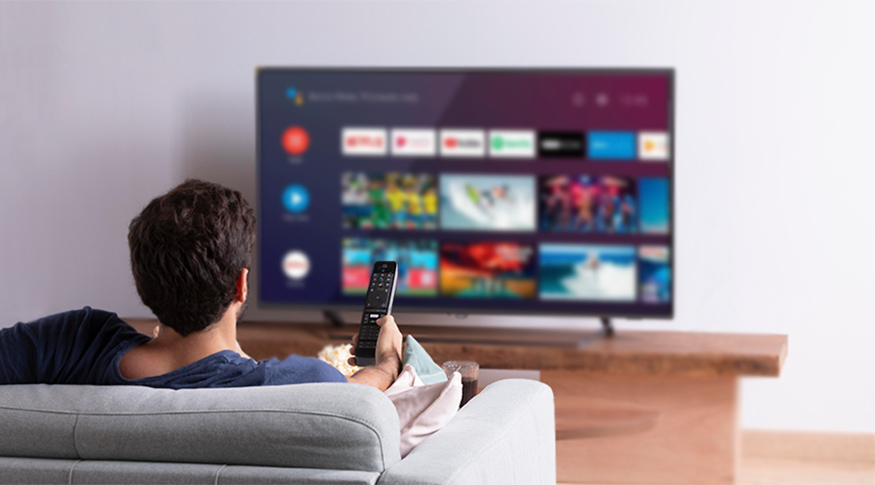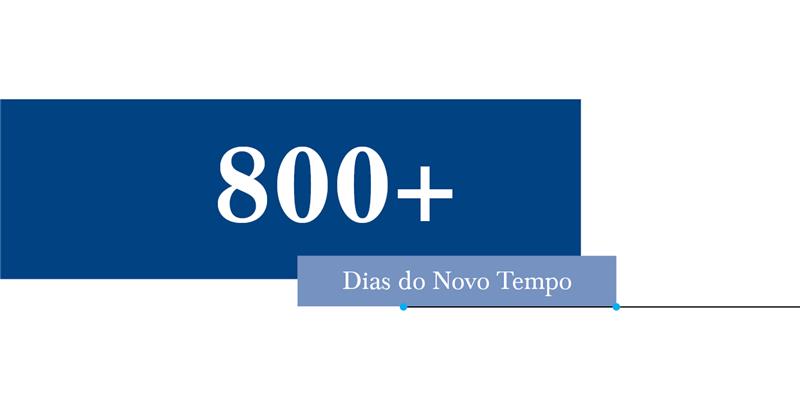PNAD TIC
Internet was available in 90.0% of Brazilian housing units in 2021
September 16, 2022 10h00 AM | Last Updated: September 17, 2022 01h49 AM
Highlights
- Internet reached a total of 90.0% of households in the country in 2021, with an increase of 6 percentage points (p.p.) against 2019, when 84.0% of the households had Internet access.
- In the rural area, the proportion of housing units with access to Internet went from 57.8% to 74.7%, between 2019 and 2021, whereas in the urban area, it increased from 88.1% to 92.3%.
- In 2021, the cell phone was the main device used to access Internet at home, being used in 99.5% of the households where this type of service was available. TV is in the second position; it was the main device used for Internet access in 44.4% of the households, having surpassed the computer (42.2%) for the first time.
- In 2021, for the first time, more than half of the elderly persons accessed the Internet in the period of reference of PNAD TIC. The percentage of Internet use by persons aged 60 and over jumped from 44.8% to 57.5% between 2019 and 2021.
- The use of mobile internet for voice or video calls (95.7%) surpassed that for sending texts, voice messages or images (94.9%), which were the most frequent uses up to 2019 (95.8%).
- From 2019 to 2021, the number of households with a TV set in the country increased from 68.4 million to 69.6 million. Nevertheless, the proportion of housing unit with a TV set fell from 96.2% to 95.55% of the total.
- The percentage of households in the country with access to subscription TV dropped from 30.3% to 27.8%, but in the rural area it increased from 16.4% to 17.8%.
- From 2019 to 2021, the percentage of households with broadband Internet connection fell from 81.2% to 79.2%, whereas the percentage of those with fixed broadband increased from 78.0% to 83.5%.
- In 2021, 1.5 million households in the country (or 2.2% of the total) did not have any of the three forms of access to digital TV (converter, parabollic antenna or subscription) and 80.6% of them were in the urban area.

For the first time since 2016, there was signficant change in the ranking of most often used devices to access the Internet in Brazilian housing units. In 2021, the cell phone remained in the leadership, being the main equipment for Internet access in 99.5% of the housing units. In the second postition, for the first time, is the television, the main choice of access in 44.4% of the housing units, an increase of 12.1 percentage points from 2019 (32.3%). The use of PCs fell from 45.2% to 42.2% and is in the third position. The last item in the list is the tablet, with a decrease from 12.1% to 9.9% of the housing units, in the period.
“Between 2019 and 2021, access by means PCs and tablets decreased, whereas access from TV sets increased more than 10 percentage points. An analysis of the series since 2016 shows there was slight increase of access by cell phone, decrease of access by computer from 57.2 to 42.2% and in the use of tablet from 17.8% to 9.9%. Television sets went from 11.7% in 2016 to 44.4%. Earnings in these housing units were higher among those using tablets, R$ 3 thousand; against R$ 2,296 earned by those using PCs, R$ 1,985 by those accessing the Internet via TV. Persons who use cell phones to access the Internet have the lowest earnings, R$ 1.480,” Flávia Vinhaes, analyst of the survey.
The data released today (16) by the IBGE can be found in the Information and Communication Technology (TIC), which is investigated during visits in the 4th quarter for the Continuous National Household Sample Survey (PNAD), which encompasses Internet access and to television in housing units and Internet access and ownership of mobile telephone by persons 10 years of age and over. The latest comparisons are those between 2019 and 2021, because this module of the survey did not go into the field in 2020 because of the Covid-19 pandemic.

Another highlight is that from 2019 to 2021, the percentage of housing units with broadband Internet access fell from 81.2% to 79.2%, whereas the percentage of fixed broadband increased from 78.0% to 83.5%.
“For the first time in the time series, fixed broadband surpassed mobile broadband, which recorded a decrease, whereas the former had a more significant increase. The increase in the use of broadband may be related to the pandemic, a period when people had to adopt social distancing measures and mostly stay at home, causing mobile broadband to be less used. Another reason can be the expansion of access in the North Region, where the percentage of housing units with Internet access by fixed broadband had a significant increment, with an increase from 54.7%, in 2019, to 70.5% in 2021” Ms. Vinhaes explains.
In 2021, among the 183.9 million persons aged 10 and over in the country, 84.7% used the Internet in the reference period of PNAD TIC. This percentage was bigger among students: 90.3%, being 98.2% for those in the private education system and 87.0% in the public system.
Percentage of housing units with a TV set in the country records decrease
From 2019 to 2021, the number of households in Brazil with a TV set increased from 68.4 million to 69.6 million. Nevertheless, there was slight decrease in the proportion of households with a TV set: from 96.2% to 95.5% of the total households in the country. This behavior was observed in all the Major Regions, with the biggest reduction of percentage points taking place in the Northeast: from 94.6% to 93.4%.
The average per capita real earning in housing units with a TV set (R$ 1,453) was equivalent to almost twice as the earnings of housing units without a TV set (R$ 830).
Em 2021, 96,2% dos domicílios urbanos e 90,8% dos domicílios rurais tinham TV.
Converters into digital TV can be found in more than 90% of the housing units
In 2021, 96.2% of the urban housing units and 90.8% of the rural housing units had a TV set.
From 2019 to 2021, this proportion increased in the urban area (from 92.6% to 92.9%) and, mostly, in the rural area (from 71.9% to 76.6%)./p>
Use of subscription TV decreases in urban areas and increases in rural areas
As for 2021, 27.8% of the housing units with a TV set had access to television subscription, a proportion that reached 29.2% in the urban area and 17.8% in the rural one. In Brazil, the percentage of housing units with subscription television dropped, except in the rural area, where this percentage was 16.4% in 2019.
In housing units without access to subscription television services, 43.5% considered it expensive and 45.6% were not interested in the service. Those who did not have the subscription TV because videos available on the Internet (including shows, films ou series) replaced that service well enough were 8.7%, whereas those that did not have the service due to lack of availability near the housing unit, were only 1.2%.
Almost 16 million housing units had a parabolic antenna
About 22.6% of the housing units in the country (or 15.7 million) received TV signal by means of a parabolic antenna, with 56.1% in rural area and 17.8% in the urban area.
Average per capita earnings in housing units with a parabolic antenna (R$ 1,075) represented 46.0% of the earnings in housing units with access to subscription television services (R$ 2,336).
Almost 60% of the elderly persons use the Internet
The proportion of persons aged 10 and over who accessed the Internet in te period of reference of PNAD TIC increased from 79.5% to 84.7% from 2019 to 2021. In all age groups, the proportions of use increased. The group aged 25 to 29 had the biggest percentage of use: 94.5%, but all the age groups 14 to 49 years of age have percentages above 90%.
Proportionally, persons aged 60 and over is the one with least access to the Internet but, from 2019 to 2021, the percentage of use of the elderly recorded most increase: from 44.8% to 57.5%, an increase of 12.7 percentage points, and surpassed 50% for the first time. In the group aged 50 to 59 anos, this percentage also increased: from 74.4% to 83.3%.
Use of the Internet for voice or video calls surpasses text messages
Also for the first time since the start of the time series, more persons have used the Internet for voice or video calls (95.7%) than to send or receive text messages, voice messages of images via different e-mail appliactions (94.9%), which had been the most commun use up to 2019. The list also includes watching videos - shows, series and films (89.1%) and sending or receiving e-mail (62%).
Whereas 84.2% of the students in the private education system used the Internet to send or receive e-mails; among students in the public system that percentage was 55.0%. Among the students in the public education sector, in 2021, the main goal of the use of Internet was to watch videos, including shows, series and films (94.1%), whereas, among those in the private sector, the biggest percentage was observed in voice or video calls (97.2%).
In 2021, 28.7 million persons did not have a mobile telefone for personal use, which means 15.6% of the population aged 10 and over. A total of 28.1% reported that the telephone appliance was expensive.
Number of housing units with a fixed telephone remains on a downward trend
The proportion of housing units in the country with fixed telephony was 15.6%, with a decrease of 7.5 percentage points in relation to 2019 (23.1%). This downward trend was also oberved in all the country’s Major Regions. The rate of housing units that have a mobile telephone (96.3%) increased against 2019 (94.4%).
The average real per capita income of the housing units without fixed telephony stood below that of the housing units that had them. In the country, in 2021, the earnings of housing units that did not have a telephone (R$ 700) represented 48.4% of the earnings that had a telephone (R$ 1,445). In the housing units with fixed telephony average earnings amounted to R$ 2,432, whereas in those with mobile telephony earnings reached R$ 1,444.
Proportion of housing units with a PC records decrease
From 2019 to 2021, the proportion of housing units with a PC decreased from 41.4% to 40.7%. In the urban area, this percentage dropped from 45.6% to 44.9% and, in the rural area, there was a decrease from 13.8% to 12.8%. In this period, the proportion of housing units with a tablet fell from 11.6% to 9.9%.
The average earnings of housing units without a PC or tablet reached R$ 835, and R$ 2,172 in the housing units with at least one of these pieces of equipment.



















